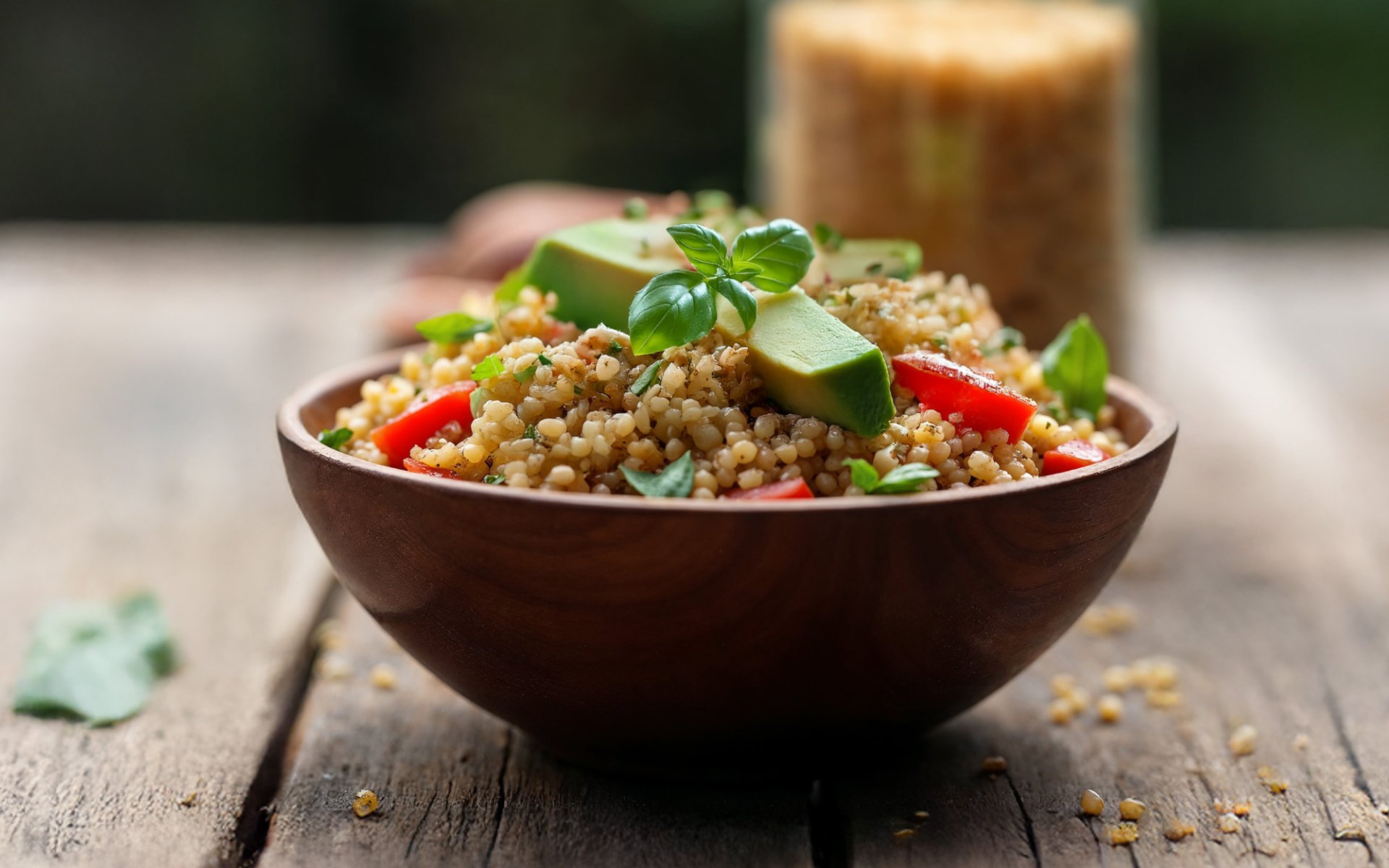Quinoa
Last updated: 29 Oct 2025

Quinoa is a seed often categorized as a pseudocereal because, while not a true cereal grain, it is consumed and used similarly to grains due to its rich nutritional profile. Botanically, quinoa belongs to the same family as spinach, beets, and Swiss chard.
For the Inca civilization, quinoa held great cultural and spiritual significance. They referred to it as The mother of all grains and considered it a sacred crop that gave warriors strength and endurance. It was used in a variety of traditional dishes such as porridge, bread, and even fermented beverages.
In Inca society, quinoa also played a central role in rituals and agricultural ceremonies. During sowing festivals, quinoa seeds were offered to the gods in hopes of abundant harvests. According to legend, the Incan emperor himself would ceremonially sow the first quinoa seeds each season.
Yet despite these efforts, quinoa never disappeared. Local communities quietly continued to cultivate and preserve the seeds, ensuring that quinoa remained an essential part of Andean food culture.
Quinoa is one of the few plant-based foods considered a complete protein, meaning it contains all nine essential amino acids. It is naturally gluten-free, making it ideal for those with gluten intolerance or anyone seeking gluten-free options. Rich in dietary fiber, quinoa supports digestive health and promotes satiety. It is also packed with essential minerals such as magnesium, potassium, iron, and zinc.
Thanks to these qualities, quinoa has earned the global title of superfood, drawing interest from health-conscious consumers, athletes, and anyone seeking wholesome, easy-to-digest nutrition.
Quinoa was first introduced in Thailand around 2013 through a collaborative initiative involving the Royal Project Foundation, the Embassy of Chile, and Kasetsart University. The aim was to explore the feasibility of growing quinoa in Thailand, using seeds provided by Chile and selecting varieties best suited to the Thai climate and terrain.
After several years of research and field trials, Thailand successfully identified two key varieties that thrive in local conditions: Huay Tom Red Quinoa and Pang Da Yellow Quinoa. These varieties are now being promoted for commercial cultivation by farmers in highland areas across northern Thailand.
You can find quinoa at all Rimping Supermarket branches.
Ancient Origins in the Andes
Quinoa is native to South America, particularly the Andes Mountains of Peru, Bolivia, Ecuador, and Chile. These highland regions have cultivated and consumed quinoa since ancient times, with archaeological evidence suggesting that it has been grown for over 3,0004,000 yearsand possibly even as long as 7,000 years.For the Inca civilization, quinoa held great cultural and spiritual significance. They referred to it as The mother of all grains and considered it a sacred crop that gave warriors strength and endurance. It was used in a variety of traditional dishes such as porridge, bread, and even fermented beverages.
In Inca society, quinoa also played a central role in rituals and agricultural ceremonies. During sowing festivals, quinoa seeds were offered to the gods in hopes of abundant harvests. According to legend, the Incan emperor himself would ceremonially sow the first quinoa seeds each season.
Colonial Suppression and Survival
In the 16th century, Spanish explorers arrived in South America and attempted to dismantle the traditions and agricultural practices of the Inca people. Quinoa was seen as a pagan crop and was actively suppressed, with European grains like wheat and barley introduced in its place. As a result, quinoa farming significantly declined.Yet despite these efforts, quinoa never disappeared. Local communities quietly continued to cultivate and preserve the seeds, ensuring that quinoa remained an essential part of Andean food culture.
A Resurgence in the Modern Era
Quinoa experienced a resurgence in popularity during the late 20th century, as scientists and nutritionists around the world began to recognize its remarkable nutritional value.Quinoa is one of the few plant-based foods considered a complete protein, meaning it contains all nine essential amino acids. It is naturally gluten-free, making it ideal for those with gluten intolerance or anyone seeking gluten-free options. Rich in dietary fiber, quinoa supports digestive health and promotes satiety. It is also packed with essential minerals such as magnesium, potassium, iron, and zinc.
Thanks to these qualities, quinoa has earned the global title of superfood, drawing interest from health-conscious consumers, athletes, and anyone seeking wholesome, easy-to-digest nutrition.
Global Cultivation and Introduction to Thailand
Originally grown only in South America, quinoa is now cultivated in parts of Europe, North America, and Asiaincluding Thailandwhere environmental conditions are favorable. Today, the leading producers of quinoa are Peru, Bolivia, and Ecuador, together accounting for over 90% of global production.Quinoa was first introduced in Thailand around 2013 through a collaborative initiative involving the Royal Project Foundation, the Embassy of Chile, and Kasetsart University. The aim was to explore the feasibility of growing quinoa in Thailand, using seeds provided by Chile and selecting varieties best suited to the Thai climate and terrain.
After several years of research and field trials, Thailand successfully identified two key varieties that thrive in local conditions: Huay Tom Red Quinoa and Pang Da Yellow Quinoa. These varieties are now being promoted for commercial cultivation by farmers in highland areas across northern Thailand.
You can find quinoa at all Rimping Supermarket branches.
Related Content
Getting to Know Potato Dumplings A Dish Highly Popular Across Central and Eastern Europe


